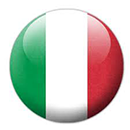|
Piazza San Francesco |



|
Trading District of Porta al Borgo: Piazza San Francesco is traditionally the area where the people of Pistoia come out to meet and walk, and where public ceremonies are held. It is the hub of the Porta al Borgo district, which is still characterised by a wide variety of commercial establishments for visitors to the city, along the roads leading out of town, such as shops, guest houses and places to eat. In 1930 a fruit and vegetable market was built on the area of the 19th-century sphaeristerium that once stood close to the city walls, surrounded by the iron railings of the Michelucci Works that stood at Porta Barriera. Interesting vestiges of the commercial life of the past include the characteristic Loggette in Via Dalmazia and traditional shops such as the historic Corsini confectioner's. |
|
Church and Monastery of St. Francis: Construction of this church began in 1289 on the site where Santa Maria al Prato previously stood and continued until the mid-1300s. It has a Latin cross plan with a broad nave and a trussed roof that retains its original ancient decoration, and a large transept from which five cross-vaulted chapels lead off. The church boasts several works testifying to the artistic scene that flourished in Pistoia in the 14th century, such as the large monochrome Crucifix in the right-hand transept; the frescoes in the main chapel depicting Scenes from the Life of St. Francis are by a Bolognese artist, while those in neighbouring chapels are by Bartolomeo di Giovanni Cristiani, Bonaccorso di Cino and the Master of the Bracciolini Chapel; other 14th-century frescoes in the chapter house, including a Tree of Life, are attributed to Antonio Vite. On the 16th-century altars in the nave are paintings by leading Florentine artists of the day. The monastery, which adjoins the west side of the church, has a large cloister leading to the chapter house, the refectory and, on the upper floor, to the monks' cells. Other spaces were added on to the monastery in the 15th century and in the 17th century the large cloister was renovated and the lunettes frescoed by Pistoian artists with Scenes from the Lives of St. Francis and St. 37 Anthony of Padua. After its dissolution, the monastery and church had a chequered history; not until 1926-27 did work begin to retrieve and restore the frescoes, which had previously been whitewashed over. |
|
Casa del Balilla: Sponsored in 1927-28 by the Balilla National Opera, Balilla House was designed by architects Raffaello Fagnoni and Giovanni Michelucci. |
|
Pantheon of Illustrious Italians: A 19th-century building in Neoclassical style, designed by architect Cosimo Rossi Melocchi, with statues and inscriptions commemorating illustrious personalities from Pistoia. From 1827 to the early 1900s the Pantheon's rooms housed a coffee house and concert room. |
|
War Memorial: The monument to the fallen of World War One, by Silvio Canevari, was erected in the square in 1925. |


| CNA Pistoia - Impresa+s.coop. Realizzato da SIS Informatica. |